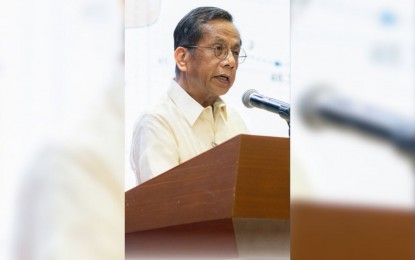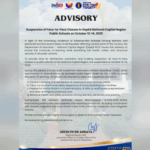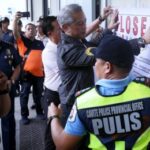MANILA – The Department of Economy, Planning, and Development (DEPDev) Secretary stated that Philippine economic growth remains strong, but reforms are necessary to achieve resilient and transformative progress.
“To achieve resilient and transformative progress, we must focus on ensuring that growth is supported by diverse sectors and regions, driven by productivity, inclusive and widely shared, and powered by a workforce prepared for the future,” the Secretary said during the 2025 Economic Forum in Manila.
The Philippine economy grew by 5.5 percent in the second quarter of the year, bringing the first-half gross domestic product (GDP) expansion to 5.4 percent.
However, growth remains primarily driven by household consumption.
“To secure sustained and resilient long-term growth, we must strengthen investments and exports as additional, equally strong pillars,” the Secretary added.
The need to broaden the geographic base of economic growth was also emphasized.
Mega Manila —comprising Metro Manila (NCR), Central Luzon, and Calabarzon— has dominated national output since 2000, consistently accounting for over half of the country’s GDP.
“This highlights the persistent concentration of economic activity in one region. To build a more balanced and resilient economy, we must develop regional economies as new growth hubs —enhancing their ability to withstand local shocks and accelerating the development of lagging regions by connecting them to fast-growing economic centers,” the Secretary explained.
The importance of boosting productivity and preparing the workforce for artificial intelligence and robotics was also stressed.
“Our mission is to ensure growth is diversified, productivity-driven, inclusive, and supported by a future-ready workforce. Achieving this will require bold reforms, strong investments, and unwavering focus on our ultimate goal: a stable, comfortable, and secure life for all Filipinos,” the Secretary concluded.
DEPDev
It appears that “DEPDev” is not a widely recognized cultural site or place, and there is limited available information about it. If you meant a specific location, organization, or cultural reference, please provide additional details so I can offer a more accurate summary. Alternatively, it could be an abbreviation or a lesser-known term that requires clarification.
Philippine economy
The Philippine economy has evolved from an agriculture-based system during its colonial periods under Spain and the U.S. to a more diversified economy today, with key sectors including services, manufacturing, and remittances from overseas workers. Despite periods of growth, challenges such as inequality, corruption, and infrastructure gaps persist. Recent efforts focus on digital transformation and sustainable development to boost competitiveness.
2025 Economic Forum
The **2025 Economic Forum** is likely a major global conference where leaders from business, government, and academia gather to discuss economic trends, policies, and challenges. While details may vary, such forums—like the World Economic Forum in Davos—often focus on innovation, sustainability, and global cooperation. The 2025 edition may emphasize post-pandemic recovery, digital transformation, or climate-related economic strategies.
Manila
Manila, the capital of the Philippines, is a vibrant city with a rich history dating back to its founding in 1571 by Spanish conquistadors. Known for its blend of colonial architecture, modern skyscrapers, and cultural landmarks like Intramuros (the historic walled city), Manila reflects centuries of Spanish, American, and Asian influences. Today, it serves as the country’s political, economic, and cultural hub, while also grappling with challenges like overcrowding and urban decay.
Mega Manila
“Mega Manila” refers to the densely populated metropolitan region in the Philippines, encompassing the capital Manila, surrounding cities, and neighboring provinces. It is the country’s political, economic, and cultural hub, with a history rooted in Spanish colonial rule, American influence, and rapid urbanization. Today, it faces challenges like congestion and inequality but remains central to the nation’s growth.
Metro Manila (NCR)
Metro Manila, also known as the National Capital Region (NCR), is the bustling capital region of the Philippines, comprising 16 cities and one municipality. Established in 1975, it serves as the country’s political, economic, and cultural hub, with a rich history dating back to the pre-colonial era and Spanish colonization. Key landmarks include Intramuros, the historic walled city, and modern skyscrapers like the Manila Metro Rail Transit System, reflecting its blend of tradition and progress.
Central Luzon
Central Luzon, located in the northern Philippines, is a historically and culturally significant region known as the “Rice Granary of the Philippines” due to its vast agricultural plains. It played a pivotal role during World War II as the site of the Bataan Death March and the fall of Corregidor. The region also boasts vibrant festivals, such as the Giant Lantern Festival in Pampanga, and historical landmarks like the Barasoain Church in Bulacan, where the First Philippine Republic was established.
Calabarzon
Calabarzon (Region IV-A) is a administrative region in the Philippines, comprising the provinces of Cavite, Laguna, Batangas, Rizal, and Quezon. Known for its rich history, it was a significant area during the Spanish colonial era and the Philippine Revolution, with landmarks like the Rizal Shrine in Laguna and the Taal Volcano in Batangas. Today, it is a key economic and cultural hub, blending heritage sites, natural attractions, and urban development.






